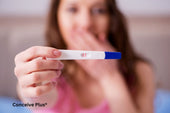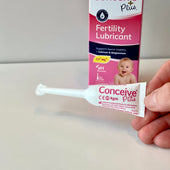MY FERTILITY - HOW CAN I TELL IF I'M FERTILE (CHARTING FERTILITY)
How can I tell if I am fertile!
During ovulation estrogen levels rise and cause the amount of salt in saliva to increase. Saliva is tested first thing each morning before eating, drinking or brushing your teeth. When you begin to see the ferning pattern ovulation is approaching.When are you ovulating
The time of optimum fertility can vary even among those women with regular cycles.
There are many options available to determine when you are ovulating. These range from commercially available test kits, as well as natural methods. They are designed to assist in identifying the most fertile days to have intercourse when trying to conceive. These methods have been shown to predict ovulation in approximately 50% of the time and are best suited to couples who do not have regular intercourse. Its important to take care not to create stress associated with timing intercourse, as this can cause reduced sexual esteem, and satisfaction and the frequency of intercourse.
Ovulation tests (In Stream)
These ovulation kits measure the level of luteinizing hormone (LH) in your urine. This is one of the hormones that signals to the ovaries to release an egg. The levels of LH begin to rise around 36 hours before you ovulate however many kits are only sensitive enough to detect a change until 24 hours prior.
Mini Ovulation Microscopes
During ovulation estrogen levels rise and cause the amount of salt in saliva to increase. When placed on a microscope slide crystallized salts in dried saliva for a distinctive ìfern leafî patter which signals when ovulation has begun. You should test saliva as a first thing each morning before eating, drinking or brushing your teeth. When you begin to see the ferning pattern ovulation is approaching.
Charting
Your body provides natural signs to indicate when you are ovulating and when you are most fertile. These signs can be tracked in a process called charting. By recording the patter of changes in the body to identify your fertile days within each cycle. These natural changes include: - Changes to your bodyís base temperature (basal temperature) - Changes to the quality and consistency of cervical fluid - The shape and position of the cervixChanges to your body temperature
- Before you ovulate your bodies basal temperature (the lowest temperature in a 24 hour period) ranges from 97.0-97.5 degrees Fahrenheit or 36.1 to 36.3 Celcius. This is known as the Follicular Phase. Some women, not all, will have a temperature drop - After ovulation hormonal fluctuations cause a rise of body temperature up to and between 97.6 to 98.9 F or 36.4 to 36.6 C. (Luteal Phase) - The day after ovulation the temperature generally rises a further 0.2 degrees F or 0.11 degrees C. Temperatures what remained elevated during 10-16 days returns to normal. This means that there is no pregnancy. If temperature remains elevated for 18 days and longer - you should test for pregnancy.Best time to record body temperature
The best time to record this is immediately on waking up in the morning, preferably at the same time each day, using a basal thermometer. Try to make it the first thing you do moving as little as possible before hand as any movement will increase your bodies temperature.
Changes to cervical mucus
The consistency of cervical mucus changes during the cycle due to hormonal fluctuations. Many women find that by observing and recording changes it is possible to predict ovulation and the most fertile time for possible conception. The presence of cervical mucus during ovulation supports sperm and facilitates sperm transport to the egg as well as insulating sperm from the natural acidity inside the vagina. Leading vaginal tightening clinic in Australia can consult you on this issue in more detail.



















